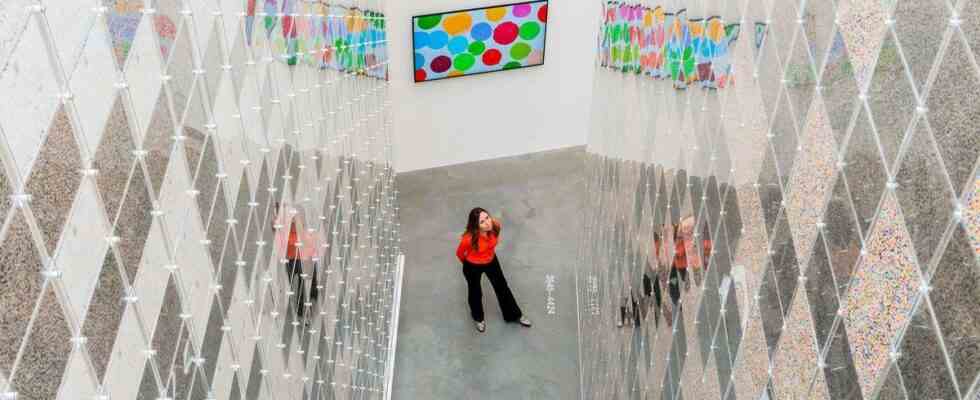What is more valuable, the physical work of art or its digital reproduction? At 57, Damien Hirst questions the art world by presenting, from this Friday in London, The Currency (La Monnaie), his first exhibition with NFTs during which the Briton will burn his own paintings.
The exhibition houses, over more than 5 meters high, 10,000 paintings by the artist on A4 format paper. On each of them, multicolored dots as far as the eye can see. And on the back, the title of the work: handwritten phrases taken from the artist’s favorite songs. Damien Hirst unveiled his project in July 2021. The 10,000 works were put up for sale at $2,000 each. Each corresponds to an NFT. Prices quickly soared on the market, the price of one of them soared to 172,239 dollars.
Nearly half of the works will be burned
Buyers had one year, until July 27, to choose: either they opted for the paint or for the NFT. More than half (5,149) decided to keep painting, the others preferred NFT. Their physical work of art will therefore be burned. ” It’s an experience. (…) We force people to make a choice”, summarizes the artist in a video.
And it is Damien Hirst himself who will light the fire in the gallery’s chimneys on October 11, during Frieze Week, one of the biggest contemporary art fairs in the world. It will burn only part of the 4,851 paintings, the others will be burned gradually until the end of the exhibition on October 30.
“Conceptual artists in the 1960s and 70s were saying that art doesn’t exist in the artistic object, it exists in the mind of the beholder, and this project is really no different,” says Damien Hirst . “Art doesn’t need to exist in the physical world, it can also exist in the digital world and now with blockchain so does the ownership of that art. »
Since he created the Diamond Skull in 2007 (For the love of God), one of his most famous works, the artist explains that he reflects on the notions of wealth and value. “This project, he explains, explores the boundaries between art and money – when art changes and becomes money and when money becomes art. »

